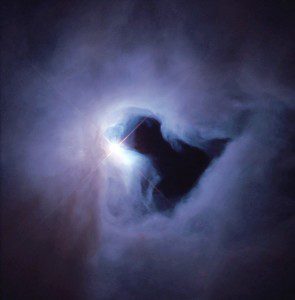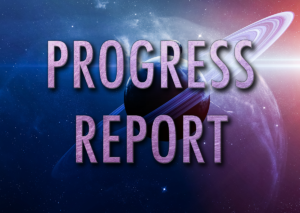 Faster than Light Travel (FTL) has always bothered me. As a scientist, it makes no sense to me, but it has become a popular trope in science fiction. Scientifically and mathematically, it doesn’t make sense.
Faster than Light Travel (FTL) has always bothered me. As a scientist, it makes no sense to me, but it has become a popular trope in science fiction. Scientifically and mathematically, it doesn’t make sense.
I’ll start with some simpler concepts…
Speeds approaching the Speed of Light
So, according to various laws, theories and principles in physics, as a mass approaches the speed of light, it’s energy increases. Meaning, the amount of energy required to maintain that speed increases. At the speed of light, that energy reaches infinity, which of course, is impossible. And because that energy requirement has already reached infinity, and there is nothing higher than infinity, no amount of energy could possibly cause a mass to move faster than the speed of light.
In other words, based on the laws of physics as we see them now, no engine would be able to allow something with mass, like a ship, to reach the speed of light. There just isn’t enough fuel to accomplish it.
The Tachyon
The tachyon is a theoretical particle. It is interesting in that it follows the exact opposite rules to matter. While normal matter increases in energy as it speeds up to the speed of light, a tachyon increases in energy as it slows down to the speed of light. You might say, “Hey, we could use tachyons for FTL!”
Well, while it is true that a tachyon by definition travels at those speeds, how would you adapt it to practical applications? It could be used as a power source, used in an engine perhaps, but the rest of the ship still wouldn’t be able to move faster than light, no matter how hard you pushed it. And you can’t make an entire ship out of tachyons because, well, it never slows down. How would you contain it?
Lightyears
Distances in space are usually given in lightyears*. What is a lightyear? A lightyear is the amount of time it would take something to travel that distance assuming it is traveling at the speed of light. That means that our nearest neighboring star, Proxima Centauri, would take 4.2 years when traveling at 671 million mph. Even at the speed of light, which is impossible, it would take over four years to reach our nearest neighbor. It would take 26,000 years to travel to the center of our galaxy at the speed of light. To travel the entire length of the Milky Way, it would take nearly 100k years.
Thats just our galaxy.
*FYI, astronomers prefer parsecs, which are 3.26 lightyears.
 Einstein-Rosen Bridge/Wormholes
Einstein-Rosen Bridge/Wormholes
This is a topic that has cropped up more often in science fiction as the concept of FTL became increasingly debunked in the general public. In fact, I’ve used the concept myself for my science fiction series, though I never said it outright.
The idea goes as follows:
Dying star collapses in on itself creating a black hole. The black hole can become a wormhole or Einstein-Rosen Bridge. The wormhole can connect two places in space.
This still presents a variety of problems.
- With the nearest star other than the sun being 4.2 lightyears away, how do we travel to one?
- If we arrive, how do we control it?
- Where do we end up?
This, at first glance, bypasses the issues inherent in FTL, but it has its own problems. For any functionality, we would need to be able to both create and control the wormhole, but I think that’s a topic for another day.
What about you? Do you have an ideas on the plausibility of interstellar forms of travel?
Discover more from Danielle Forrest | Sci-Fi Romance Author
Subscribe to get the latest posts sent to your email.



1 comment
Joanne Meredith
April 3-7 Download a FREE Kindle ebook of Wormholes:A Novel, by Dennis Meredith, on Amazon [http://amzn.to/1N7M52u]
Something is devouring Earth. . .
A suburban house in Oklahoma vanishes into a roaring abyss. A supertanker at sea suffers a fiery destruction. A blast in China drills a gigantic cavern into a mountainside. A severed arm plummets from the sky in Missouri.
Could these catastrophes possibly be related? Intrepid geologist Dacey Livingstone is nearly killed by her first attempt to plumb the mystery—a perilous descent into a house-swallowing sinkhole. Still determined, she joins with eccentric physicist Gerald Meier in a quest that takes them from the ocean’s depths to interstellar space.
What are these exotic “wormholes” that threaten Earth? Can their secrets be discovered, their power even harnessed? Or will they spawn a celestial monster that will annihilate the planet?
Veteran science writer Dennis Meredith has crafted this cosmic adventure drawing on his decades of experience working at leading research universities such as Caltech, MIT, Cornell and Duke.